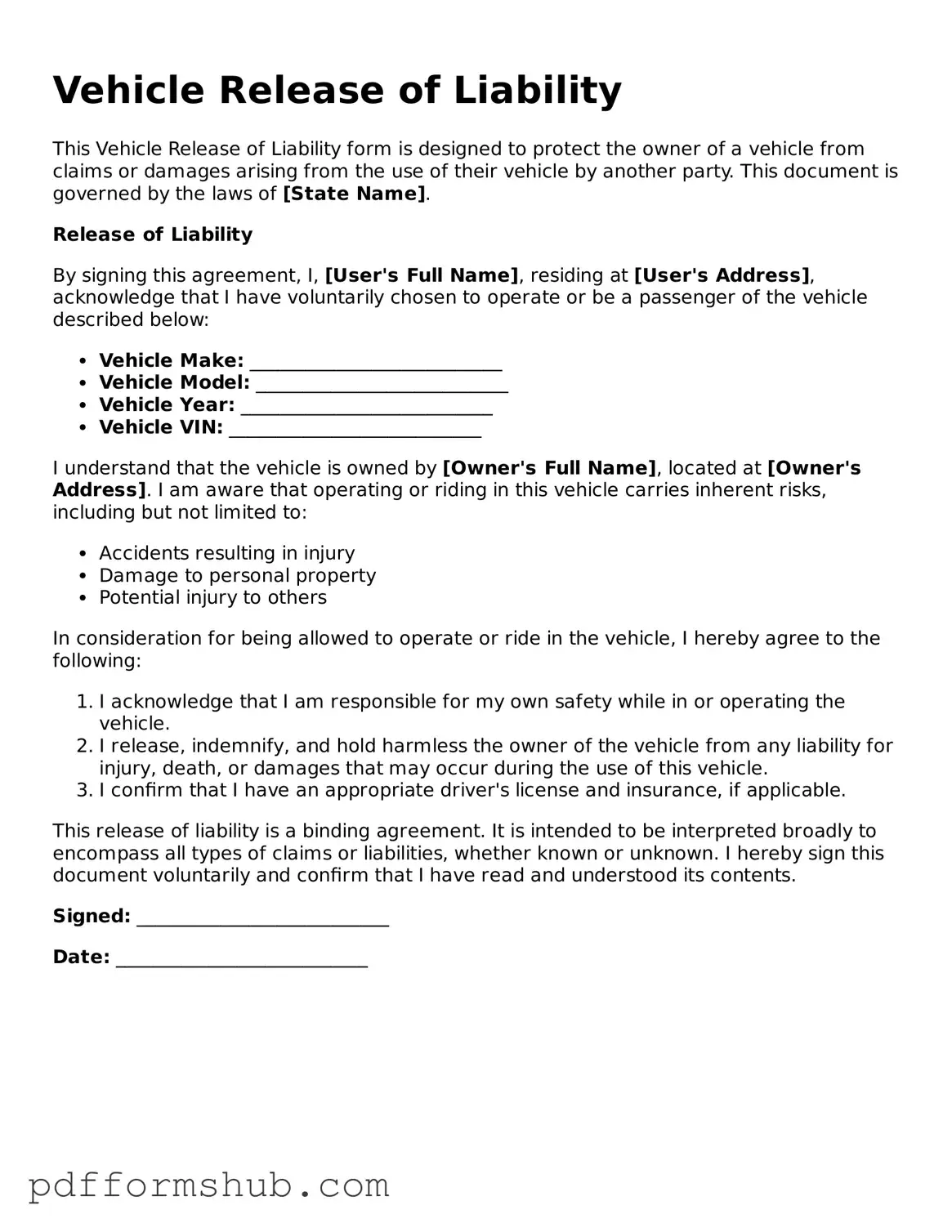Valid Vehicle Release of Liability Form
The Vehicle Release of Liability form is a legal document that protects vehicle owners from being held responsible for any accidents or damages that occur after they have transferred ownership of their vehicle. By signing this form, the new owner assumes all risks associated with the vehicle, ensuring that the previous owner is no longer liable. To safeguard your interests, consider filling out this form by clicking the button below.
Customize Form
